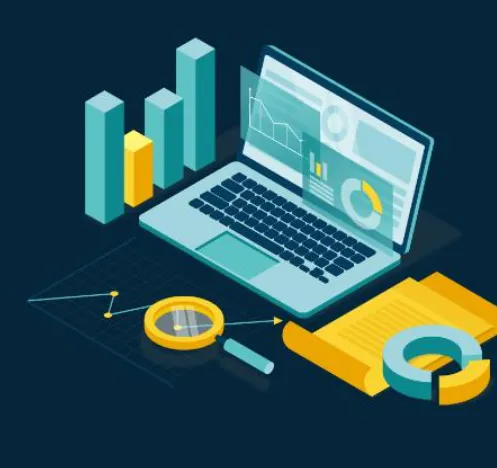In today’s business environment, organizations generate more data than ever before. The challenge isn’t just collecting this information—it’s turning it into something useful. That’s where Business Intelligence (BI) comes in. BI tools and strategies help companies analyze data, uncover patterns, and make smarter decisions that drive growth and efficiency.
This blog explores the advantages of business intelligence, how it’s applied across industries, and real-world examples of companies putting it to work.
What Exactly Is Business Intelligence?
Business intelligence refers to the technologies, practices, and systems that transform raw information into insights. Instead of relying on guesswork, leaders use BI to answer critical questions such as:
- Which products are performing best?
- How can we cut costs without sacrificing quality?
- What shifts in customer behavior should we prepare for?
BI covers three main approaches:
- Descriptive analytics: understanding what has already happened.
- Predictive analytics: forecasting what is likely to happen next.
- Prescriptive analytics: recommending actions to achieve desired results.
While large corporations were the early adopters, small and medium-sized businesses are increasingly realizing that BI can help them monitor sales trends, evaluate marketing effectiveness, and streamline operations.
Key Benefits of BI Tools
Adopting BI brings a wide range of advantages, including:
- Accurate Forecasting: Predictive analytics makes it possible to anticipate customer needs, market trends, and performance outcomes before they happen.
- Real-Time Decision Making: With live data streams, businesses can act immediately rather than waiting for outdated reports.
- Actionable Insights: BI goes beyond reports by revealing opportunities to improve processes, enhance customer experiences, and optimize resources.
- Strategic Recommendations: Prescriptive analytics offers guidance on the best steps forward, from inventory adjustments to marketing strategies.
- Data Visualization: Charts, graphs, and dashboards transform complex datasets into visuals that are easy to interpret and share.
Together, these benefits allow businesses to remain agile and competitive in a fast-changing marketplace.
Implementing BI Successfully
Rolling out BI solutions requires more than software. Companies need to:
- Gather information from multiple sources such as sales, finance, and customer interactions.
- Clean and prepare the data to ensure accuracy.
- Use BI tools to analyze and visualize findings.
- Build a culture that values evidence-based decision-making over assumptions.
Skilled analysts and properly trained employees are essential to making the most of BI investments. When supported by leadership and integrated into daily operations, BI becomes a long-term asset rather than just another piece of technology.
How BI Transforms Different Industries
Retail
Retailers use BI to understand customer buying patterns, personalize promotions, and forecast demand. Insights into sales data also help improve inventory planning and streamline supply chains.
Banking
Banks rely on BI for fraud detection, customer profiling, and personalized service. By analyzing transaction histories, they can design better financial products and reduce risk.
Automotive
Car manufacturers and dealers apply BI to monitor production efficiency, predict equipment maintenance needs, and analyze consumer preferences for targeted marketing.
Hospitality
Hotels and restaurants employ BI to track occupancy, optimize staff schedules, and enhance guest experiences. Monitoring online reviews and feedback in real time also strengthens brand reputation.
Pharmaceuticals
Drug developers turn to BI to analyze clinical trial outcomes, predict health trends, and manage complex supply chains. This helps them bring safer, more effective products to market faster.
Real-World Examples of BI in Action
- American Express predicts customer churn and detects fraud by analyzing account behavior.
- Coca-Cola uses BI to monitor social media activity and refine marketing campaigns.
- Netflix relies on viewing data to recommend shows and guide content production.
- Starbucks personalizes offers through insights gained from its app and rewards program.
- Tesla gathers real-time vehicle data to improve product design and maintenance.
- Uber uses algorithms to adjust pricing based on live demand and driver availability.
- Delta Airlines leverages BI to improve service for frequent corporate travelers.
Final Thoughts
Business intelligence is no longer optional—it’s a necessity for organizations that want to thrive in a data-driven world. By implementing BI, companies can improve forecasting, react in real time, and gain the insights needed to stay ahead of competitors. Whether in retail, finance, healthcare, or beyond, BI offers the clarity businesses need to make confident, informed decisions.







